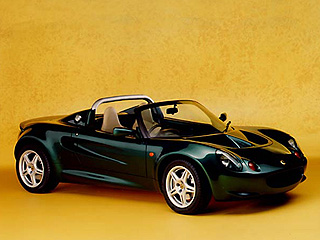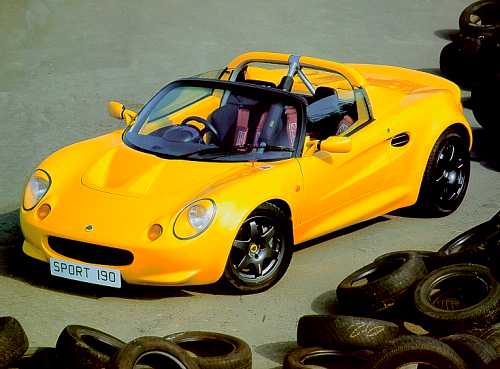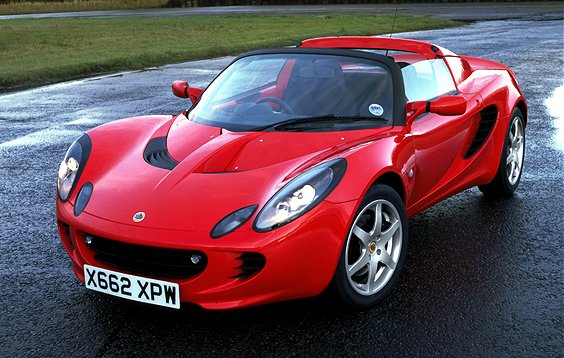

In 1995, a new Lotus sports car was announced.
At the Frankfurt Motorshow that September, the Elise was shown to the public and was instantly acclaimed. Weighing only 700kg, the Elise was constructed on an Epoxy bonded aluminium chassis.
At a selling price of �20,000, the Elise became an instant hit, with the first years production pre-ordered well in advance, which made the waiting time in excess of 1 year.
The Rover MGF K-Series engine was used. Producing 118 bhp from 1.8 litres, this could power the Elise to 60mph in only 6.1 secs.
If any criticisms were made about the Elise, the main problem was its lack of power.
All these improvements made the Elise even better to drive, now accelerating to 60mph in 5.0 secs and on to a 129mph Top Speed. Another model was the Sport 190, with a further power hike
The Elise made it's general competition debut in 1997, competing in the International GT championship.
Another derivative is the 111S, a non-limited edition model.
In 2000 the Elise was given a thorough facelift, improving on some of the areas that customers felt needed a slight rethink
The updated model also received exterior changes in the wake of the introduction of the Vauxhall VX220, to keep the Lotus model firmly the No.1 choice.
It was to be lightweight with a new alloy sandwich chassis. The emphasis was on roadholding and performance in the Lotus tradition.
This was answered with the introduction of the Sport 135, a limited run of 50 cars with a power increase to 135 bhp. Also uprated were the brakes, and suspension.


Using the MGF VVC engine, the 111S develops 143 bhp. A close-ratio gearbox is fitted, along with cross-drilled brakes, wider rear wheels, a redesigned engine cover and grille, new alloy wheels, rear spoiler, and special badging.

